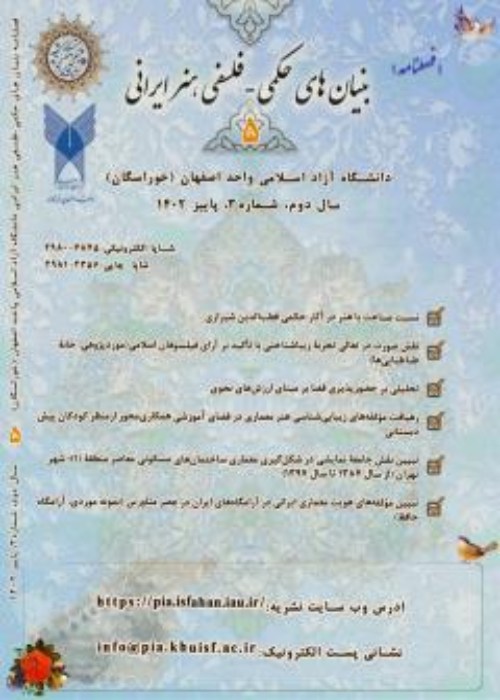Revisiting Identity and the Formation of the Third Space in Contemporary Art of Isfahan, with an Emphasis on the Theory of the Third Space by Homi Bhabha (Case Study: Works by Hossein Tahvilian, Mohammad Khalili, Seyed Mahmoud Hosseini, and Mehdi Hamedi)
The art of painting in Isfahan has a historical background dating back to cave dwellings in this region, playing a significant role in the evolution of Iranian painting and maintaining its structure throughout governmental changes. Isfahan's geographical location, situated in the center of Iran, has provided Iranian artists with the opportunity to engage with both Eastern and Western transformations. This characteristic, coupled with the migration and establishment of art universities in Iran, has had a profound impact on cultural and artistic relationships, leading to innovative movements in contemporary Isfahan painting. Drawing on the concept of hybridity and the third space, Homi Bhabha effectively describes the formation of this space in postcolonial critique and emphasizes its significance in generating new cultural and artistic interactions. One of the key factors contributing to the creation of such a space in contemporary Isfahan painting is the presence of migrant artists and graduates from art universities in other cities who have contributed to the emergence of a new visual space in Isfahan's art scene. This article aims to review the identity and formation of the third space in contemporary painting in Isfahan, with a focus on Homi Bhabha's theory. The central question of this research is: What impact have immigrant artists had on the reinterpretation of identity and the formation of the third space in Isfahan's contemporary painting? The research methodology employed is primarily a combination of a fundamental-applicative approach in terms of its objective and a descriptive-analytical approach in terms of its nature. The sampling method utilized is purposeful, involving the selection of four artists who have studied both in Tehran and in universities and schools in Isfahan, particularly in the field of painting. The research findings demonstrate that immigrant artists in Isfahan have successfully contributed to the creation of a new intercultural space within the city, closely aligning with Homi Bhabha's conceptualization of the third space.
- حق عضویت دریافتی صرف حمایت از نشریات عضو و نگهداری، تکمیل و توسعه مگیران میشود.
- پرداخت حق اشتراک و دانلود مقالات اجازه بازنشر آن در سایر رسانههای چاپی و دیجیتال را به کاربر نمیدهد.



